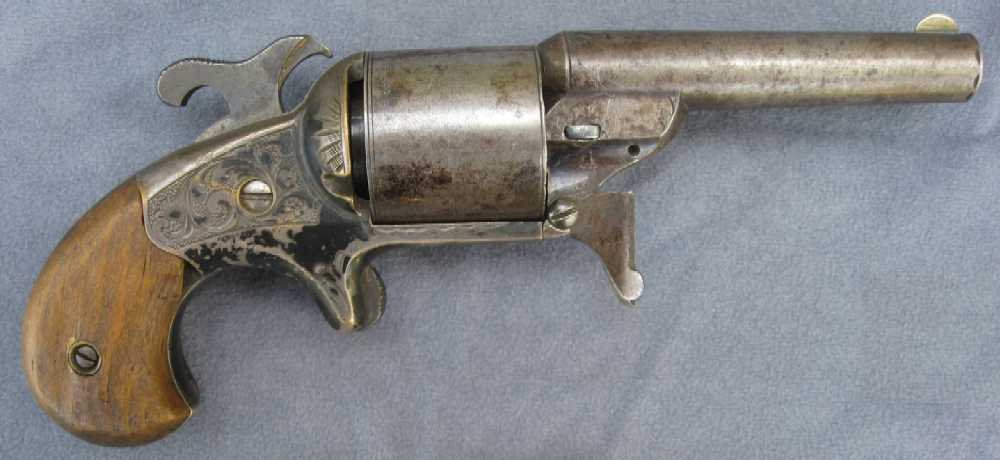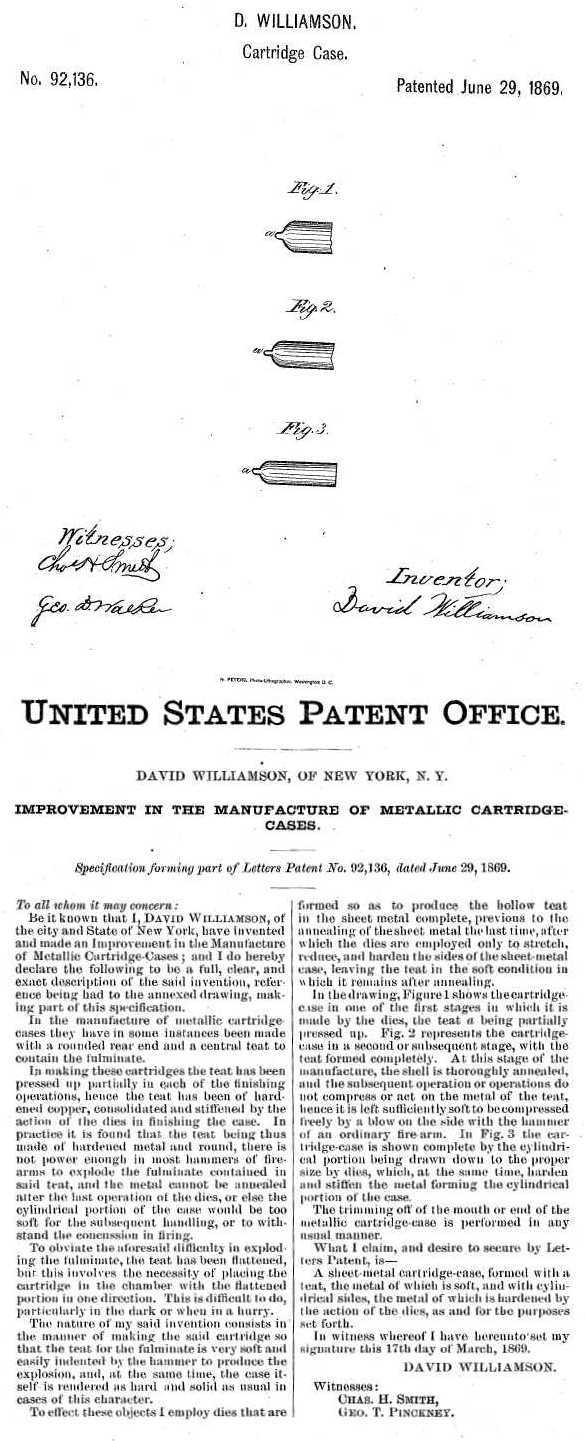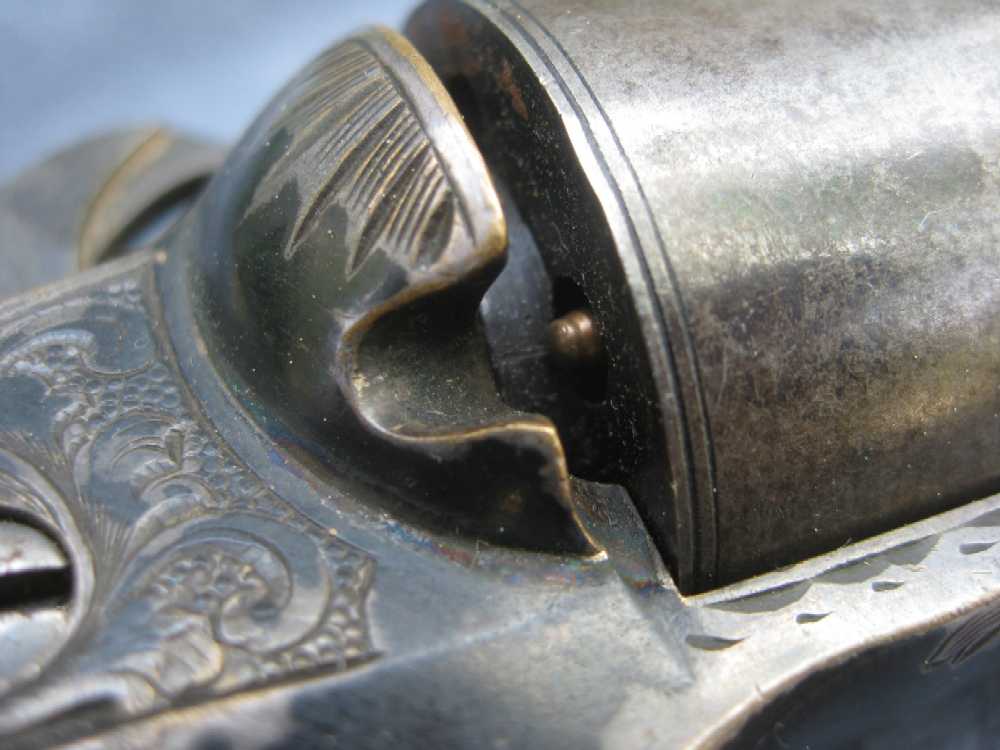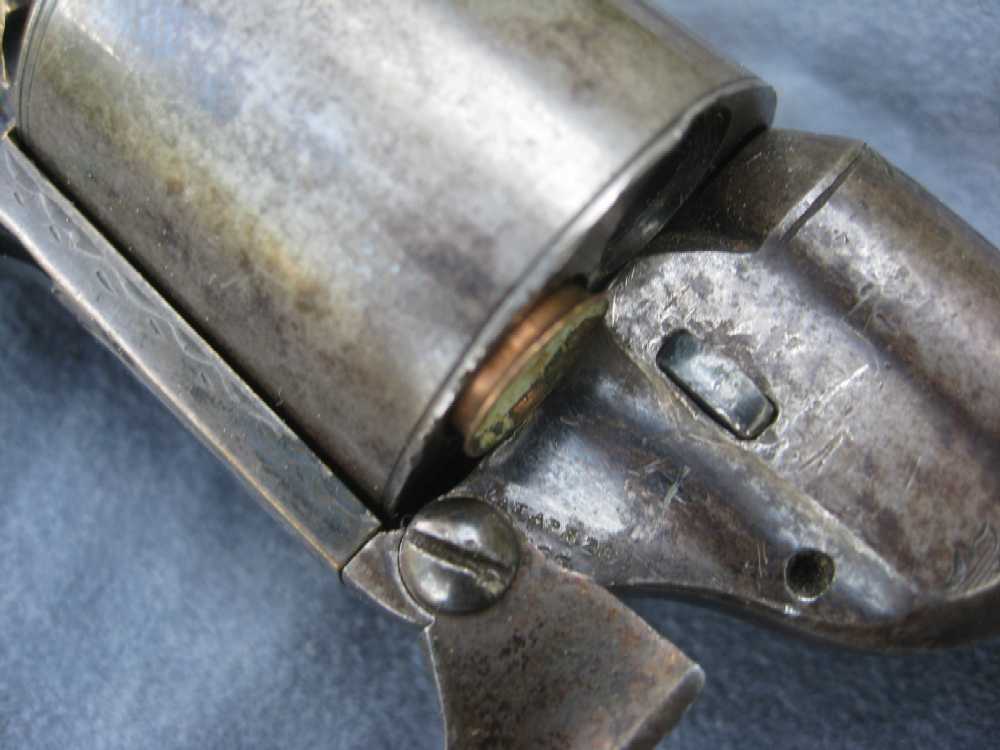|
THE CARTRIDGE COLLECTOR'S EXCHANGE |
| Contents
Cartridge
Lists
Prior Picture Pages:
Links to Other Sites
Cartridge Collectors Organizations:
Auctions:
Books:
Other Collector's Sites: |
Home of the Old Ammo Guy's Virtual
Cartridge Trading Table
Picture Page April 2010 A look at a number of 5-IN-1 movie blank boxes.....
The boxes of these blanks are usually found with either of two Hollywood movie property company labels attached, these companies being the Ellis Mercantile Company and Stembridge Gun Rentals at Paramount Studios. Ellis Props and Graphics Partners, or Ellis Mercantile as they were called, was established as a pawn shop in 1908 and soon got into the movie prop rental business. They closed shop in 1999. Stembridge Gun rentals of Hollywood, California, was formed in the 1920s by James Stembridge and Cecil B. DeMille to supply guns to the movie industry. The company is still in business and is currently run by the son of the founder's nephew. . . . . . . The blanks in this next Ellis Mercantile .
. . . . . . . . .
. . . . . . . .This box of blanks was actually loaded by Remington rather than being sold as primed or unprimed empty cases to a movie property house to be loaded by them. It dates from the mid-1920s based on the company name and the style. It is impossible to determine what kind of powder these blanks are loaded with without taking one apart, but the label indicates that they were 'specially loaded for flash, smoke and noise'. The labeling on this Remington box provides the logic behind the name '5-in-1, stating that the cartridges are adapted 'for .38-40 and .44-40 rifles, .38-40, .44-40 and .45 Colt revolvers'. This information being on the label of this box suggests that Remington may have been responsible for coming up with the 5-IN-1 name. . Another example of a box of Remington-loaded 5-IN-1 blanks, this one in the green and red box format used by the company for 15 or so years following WW2. The labeling on the back of the box provides the same information as the box above regarding the firearms the cartridges were intended to be used in. In addition, the labeling indicates that the blanks were 'loaded with a special powder to assure an extra loud report'. . . . . Next are a few more examples of 5-IN-1 blanks that aren't typical of
those usually found. The first one actually isn't a blank, but instead is a
dummy which has had the 'bullet' painted silver to make it appear more like
an actual loaded cartridge, and the case mouth and the primer pocket filled with lead. This
one obviously was prepared for a movie scene
. . A .32 National No 2 teat fire box label......
. . . . . . . The Williamson teat-fire cartridge was patented by David Williamson of Brooklyn, New York on January 5th, 1864 (patent 41,153), with an improvement patented on June 29th, 1869 (patent 92,136). It was one of several 'front-loading' cartridges that were introduced in the period of transition from loose muzzle-loaded ammunition to self-contained metallic cartridges from the mid-1860s to early 1870s. The only reason these rather odd cartridges were developed was because of the patent that Rollin White secured in 1860 on the bored through revolver cylinder, which covered any revolver design with a cylinder that loaded from the rear. Smith & Wesson, who developed the rim fire cartridge in 1859, acquired Rollin White's patent, ensuring that the company had a virtual lock on the market for metallic cartridge revolvers until the expiration of the patent. Consequently, in order to continue producing revolvers without having to pay a royalty to Smith & Wesson, other firearms makers were forced to come up with innovative revolver and ammunition designs that did not use a cartridge that loaded from the rear of the cylinder and was held in place by its rim. Few of these new cartridge designs or the revolvers that were produced to shoot them proved to be of lasting popularity, including Colt's Thuer, Plant's cup-primed, and Crispin's split cylinder designs. On the other hand, Williamson's teat-fire cartridge and revolver proved to be the most successful competitor of all to Smith & Wesson. The revolvers that used the teat-fire cartridge were made by Daniel Moore of Brooklyn, New York. Moore had been in business since 1860 as Moore's Patent Firearms Company, producing a seven shot .32 rim fire single action belt revolver. In 1863, he was one of a number of revolver manufacturers that were forced to pay royalties on their breech loading revolvers to Smith & Wesson after that company was successful in suing them for infringing on the Rollin White patent. Orders for Smith & Wesson revolvers far exceeded their capacity to produce them at this time, and they purchased at discounted prices in excess of 10,000 of the patent-infringing revolvers from Moore, James Warner, Lucius W. Pond, and Bacon Manufacturing Company to meet some of this demand. These revolvers will be marked 'Made for Smith & Wesson'. In 1863, Moore changed his company name to Moore's Patent National
Firearms Company and began to gear up for production of a teat-fire revolver
for which he had received a patent in April of that year. This revolver used an early form
of
teat-fire cartridge of Moore's own design. The cartridge had a flat base,
and as a result, the chambers in the cylinder of the revolver did not fully
cover the head of the cartridge in the area where the hammer had to strike
the teat, resulting in the exposed portions of the
cartridge heads occasionally blowing out. David Williamson recognized this
weakness, and redesigned both the cartridge and the revolver cylinder,
giving the cartridge a hemispherical base which allowed the chambers to
fully enclose the base with only the teat being exposed. This cartridge was
Williamson's flat teat design which was patented on January 5, 1864. He also
received a patent on the redesigned cylinder on the same day (patent #
41,184). This cylinder design was immediately incorporated into Moore's In 1866, after around 20,000 of the revolvers had been produced, Moore changed the name of his company to the National Arms Company, producing another 12,000 revolvers before being bought out by Colt in 1869, at which time production of the National revolver ceased. The revolvers made by Moore's Patent National Firearms Company were only produced in .32 caliber. The National Arms Company continued production of the .32 revolver, and also produced on an apparently limited basis a larger framed revolver which was chambered for a .45 teat-fire cartridge. The company's four page 1866 catalog includes only the .32 caliber revolver and their No 1 Pistol, a single shot all metal deringer which used conventional .41 short rim fire cartridges. This No 1 pistol was joined within a few years by a modified version of the handgun which they called their No 2 Pistol; it had walnut grips and was also a .41 rimfire. Just when production of the .45 National revolver and its teat-fire ammunition commenced I don't know, but Flayderman's Guide to Antique American Firearms indicates the quantity produced was very limited; the same can be said for the cartridges, which are quite rare today.
The 1866 National Arms catalog price for the .32 revolver ranged from $14.75 for an un-engraved blued version to $24.50 for an engraved, gold-plated, ivory stocked version; cartridges were $14 per thousand. The 1869 Folsom Brothers & Company catalog lists the National (Improved) revolver at $12.50; I believe this was the .32 caliber model; there is no mention in the catalog of a second National revolver, which would have been the .45 caliber model. The 1871 Great Western Gun Works catalog lists among its ammunition .32 National cartridges, still at $14 per thousand; there is no entry for the .45 cartridge. In addition to the label shown above, boxes of these cartridges will be found also labeled for the Improved National Revolver and without the Williamson patent information. 'Improved' may refer to any of several changes that were made to the revolver in the course of its production, one of the more obvious being the addition of a lever on the side of the frame for ejecting the spent cases. The change in the design associated with the introduction of the round teat cartridges may also be the improvement referred to. However, the label shown above, while indicating that 'round teat' cartridges are in the box, does not mention the 'improved' revolver, so I may be off base in this regard. Incidentally, the No 2 noted on the label refers to the caliber (.32). This was the standard designation used for this caliber at the time these cartridges were produced and does not suggest that there was also a National revolver that used a No 1 cartridge. R. Bruce McDowell points out in his book A Study of Colt Conversions and Other Percussion Revolvers that Colt's purchase of the National Arms Company was for the purpose of ensuring that they had a revolver design to produce in the event that the Rollin White patent was extended beyond its expected expiration in April of 1869. That may be the case, but they also immediately began production of their versions of National's No. 1 and No 2 pistols, the little single shot .41 deringers which Colt referred to as their First Model Deringer and Second Model Deringer, respectively. Their percussion revolver conversions based on Alexander Thuer's 1868 patent had proven to be a disappointment, with fewer than 5000 produced from September 1868 until the end of production in July 1871. So as not to limit their options should the White patent not be extended, Colt engineers were also busy designing metallic cartridge revolvers at the same time the Thuer conversions were being made. Patent laws at that time allowed protection for a nine year period, with the opportunity to apply for a renewal of the patent at the time of expiration. When the time came for Rollin White to renew his patent, he initially refused to do so because he felt that Smith & Wesson had not compensated him adequately for the use of the patent. Since White had granted them exclusive rights to his patent, it was necessary for Smith & Wesson to agree to allow White to manufacture his own bored through cylinder revolvers when the patent was extended, as well as to split the costs of the application in order to get him to file for the extension. Unfortunately for White and Smith & Wesson, the extension was denied. The denial is thought to have resulted from the effect that the patent had on the production and procuring of revolvers by the US military during the Civil War and the three years following the war. While the patent was in effect, not only were commercial firearms manufacturers prevented from producing bored through cylinder revolvers, but the U.S. government couldn't produce them either, nor could they contract for such revolvers with a manufacturer in this country other than Smith & Wesson. At about the time Williamson's second cartridge patent was issued, Colt was in the process of purchasing the National Arms Company, signaling an end to the production of the National revolver. It is possible that Williamson applied for the patent for the round teat cartridge with the expectation that Colt would continue to produce the revolver, resulting perhaps in an increase in royalties being paid to him as demand for the cartridges grew with the production of teat-fire revolvers coming under Colt's control. Continued production of the National revolver was not to be, due in large part to the refusal of the government to extend the White patent. At the time Colt completed the purchase of National, they had already begun converting percussion revolvers to use metallic cartridges on contract for the US Government, based on the Richards patented design. The two Williamson patents are shown below. It should be noted that the specifications for the round teat cartridge mentions the difficulty in loading the flat teat cartridge in the dark or when the shooter was in a hurry. The cartridge had to be positioned with the flat side of the teat resting against the top edge of a raised ring that is formed on the rear of the cylinder. If the cartridge is not positioned just right, the teat is unable to protrude fully through the rear of the cylinder and on top pf the edge of the raised ring on the rear of the cylinder, against which the hammer was supposed to strike the teat. Because the cartridge was not fully seated in the chamber, the cylinder could not be rotated.
. . . . . . . . . . . . . . . . . . . . . . . . . . . . . . . . . . . . . . . . . . . .
In comparing the thicknesses of the flat and round teat cartridges, I
couldn't help but wonder if any changes needed to be made to the revolver
for it to use the thicker round
It would appear that by introducing the round teat cartridge and the modified revolver that used it, Moore did nothing to resolve the problem that was being encountered by those who had purchased his earlier revolvers that used the flat teat cartridge. Instead, these unsatisfied customers were now faced with the possibility of purchasing the incorrect (round teat) cartridge, which they would then find would not function at all in their revolvers. However, the grooves needed to chamber the round teat cartridges could have easily been added by any competent gunsmith, and I would bet that many of the early revolvers that were made for use with the flat teat cartridges will be found with the modification. I would be interested in hearing from anyone who has any information regarding when the round teat cartridge and the revolver that would accept it was introduced. While it may have been around the time the patent was issued in 1869, I suspect it was earlier, with the application for the patent being an after-thought by Williamson to secure his design prior to the purchase of National by Colt. One thing that supports my suspicion is the label shown above, which is clearly marked as round teat cartridges, yet it carries the 1864 patent date for the flat teat cartridge. The three pictures of the National revolver shown above are courtesy of
Roger Papke, (www.handfulsofhistory.com).
.
|

 revolver, which was introduced in early 1864.
The revolver shown in this picture is one of those made by Moore's Patent
National Firearms Company. The lever that can be seen at the lower front of
the cylinder is the loading gate, in the open position to allow a cartridge
to be inserted in the front of the cylinder.
revolver, which was introduced in early 1864.
The revolver shown in this picture is one of those made by Moore's Patent
National Firearms Company. The lever that can be seen at the lower front of
the cylinder is the loading gate, in the open position to allow a cartridge
to be inserted in the front of the cylinder. 

 teat
cartridge. To check this, I turned to Roger Papke, a gun collector who
checks in with me from time to time looking for a cartridge to go with the latest
addition to his collection. I knew Roger had one of the National revolvers,
as I had sold him a flat teat cartridge for it. After sending
him one of the round teat cartridges, he contacted me and advised that the
cartridge would not fully seat in his revolver, as the round teat was too
thick to allow it to do so. The two pictures here show the resulting
problem. In the picture above, the tip of the round teat can be seen making
contact with the edge of the raised ring on the breech face, rather than
slipping past the edge. The next picture shows the mouth of the cartridge
extending beyond the front face
teat
cartridge. To check this, I turned to Roger Papke, a gun collector who
checks in with me from time to time looking for a cartridge to go with the latest
addition to his collection. I knew Roger had one of the National revolvers,
as I had sold him a flat teat cartridge for it. After sending
him one of the round teat cartridges, he contacted me and advised that the
cartridge would not fully seat in his revolver, as the round teat was too
thick to allow it to do so. The two pictures here show the resulting
problem. In the picture above, the tip of the round teat can be seen making
contact with the edge of the raised ring on the breech face, rather than
slipping past the edge. The next picture shows the mouth of the cartridge
extending beyond the front face  of
the cylinder, which in turn prevents the cylinder from revolving so as to
load the next cartridge. The serial number of this revolver is just shy of
8,000, so there are at least 8,000 (most likely significantly more) of these
revolvers that will not accept the round teat cartridge. The modification to
the revolver that allowed it to accept the round teat cartridge consisted of
a shallow groove cut in the raised ring on the rear of the cylinder, which
allowed the teat to slip into place.
of
the cylinder, which in turn prevents the cylinder from revolving so as to
load the next cartridge. The serial number of this revolver is just shy of
8,000, so there are at least 8,000 (most likely significantly more) of these
revolvers that will not accept the round teat cartridge. The modification to
the revolver that allowed it to accept the round teat cartridge consisted of
a shallow groove cut in the raised ring on the rear of the cylinder, which
allowed the teat to slip into place.